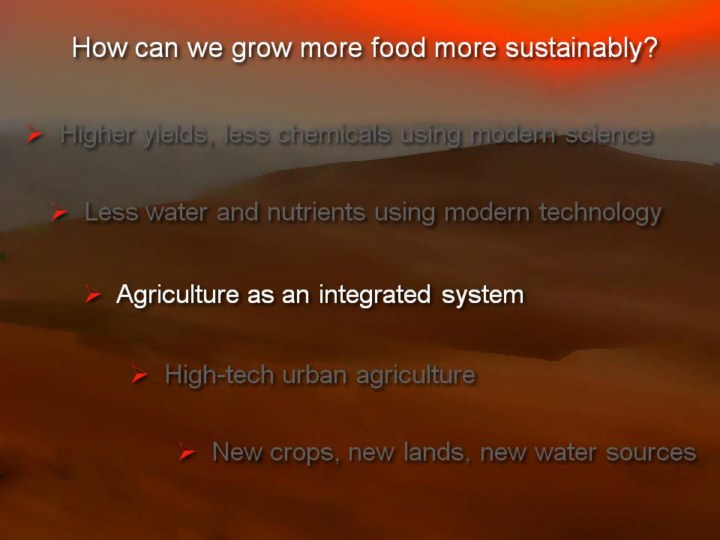 |
Modern high intensity agriculture focuses on the production of one kind of
crop at a time, be it hogs, cattle, corn or soybeans, on a very large
scale. This has huge efficiencies of scale – and huge inefficiencies. We
use energy to pull nitrogen out of the air and extract other minerals from
the ground to dump on our fields, a significant fraction of which run off to
pollute water, as I’ve shown you. We feed the grain grown in this way to
animals raised at a very high density, commonly in closed structures. These
animals generate a great deal of waste rich in plant nutrients, which often
itself becomes a pollutant. Organic farming is a return to older farming
approaches in which animals provide the fertilizer for plants. The
principle of reintegrating nutrient flows in a sound one, but unfortunately
organic farming as it is currently practiced under an arbitrary set of rules
is simply inefficient, which is why organic produce costs so much more than
produce grown by what have become convention modern farming methods.
Indeed, the notion that we could feed a world of 7 billion, much less 9
billion, with organic agriculture is simply wishful thinking. But my view
is that we should keep the principle, but use the most up-to-date science we
can find. Let me share one example of a system that integrates aquaculture
with vegetable growing.
|
